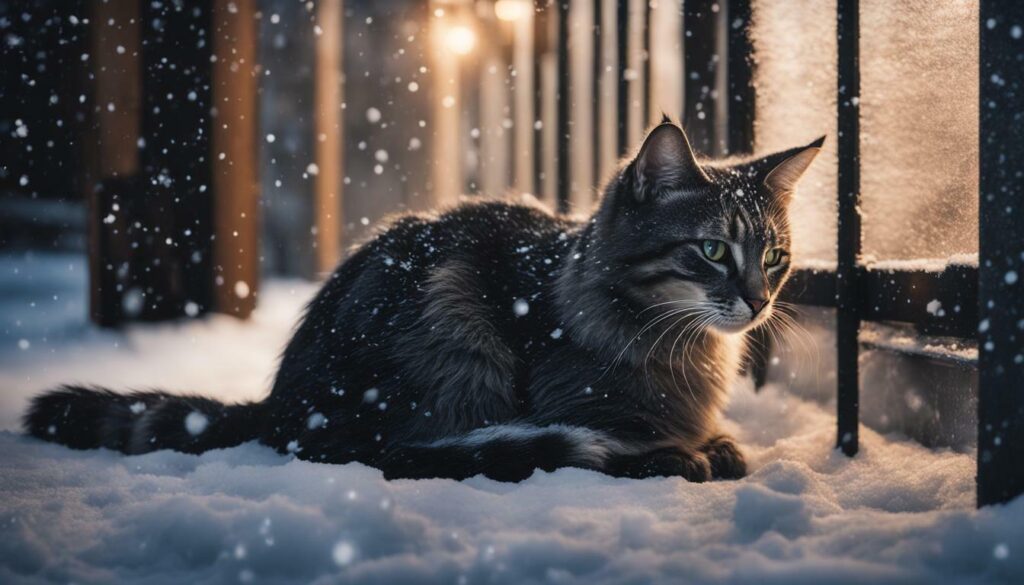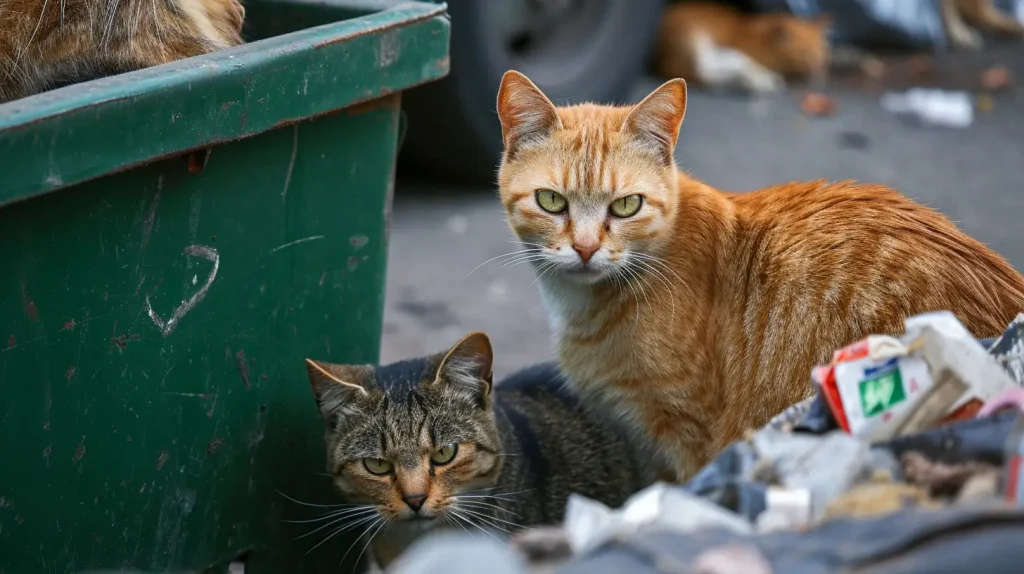Table of Contents
There is no denying that cats have been companions to humans for thousands of years. Their charm, grace, and mystery have made them celebrated members of our households. Yet, there is another side to our feline friends that is often overlooked – the free-roaming, unowned, or ‘stray’ cats, whose numbers are increasing worldwide. This raises an important discussion – what happens when these independent roamers interact with local ecosystems? What is the impact of stray cats on local wildlife?
Historical Context of Cat Domestication
The Domestication Process
The story of cat domestication begins nearly 9,000 years ago, in the Near East, where the first agricultural societies started to form. As humans transitioned from a nomadic lifestyle to settled farming, they began to store surplus crops. These storage sites attracted rodents, which in turn attracted wild cats.
Over time, a symbiotic relationship developed. The cats helped control the rodent populations, and in return, they had a consistent food source. Humans began to tolerate, and eventually welcome, these helpful creatures. The wild cats that were friendlier and more sociable with humans were likely to receive more food, and over generations, these ‘social’ traits were passed down. This process, known as ‘self-domestication’, is how wild cats evolved into the domesticated felines we know today.
The Emergence of Stray Cats
But how did we end up with stray cats from this mutual arrangement? As societies expanded and evolved, so did human-cat interactions. Cats were transported by humans to different parts of the world. Some cats escaped from their human homes, while others were abandoned or lost. Over time, these cats and their offspring formed the stray and feral cat populations we see today.
Understanding this historical context helps us appreciate why stray cats are so well adapted to human environments. They have lived alongside us for thousands of years, surviving and even thriving, in the myriad of environments we inhabit. This history also highlights the important role that human actions have played, and continue to play, in shaping cat populations, a factor that is key in addressing the impact of stray cats on local wildlife.
Understanding Stray Cats
Stray cats, often misunderstood and mistaken for either feral or domestic cats, occupy a distinctive niche within our urban and rural landscapes. These enigmatic creatures bear the invisible but identifiable marker of past human interaction. They might have once curled up on someone’s lap or playfully engaged with toys in a human home. But somewhere along the line, circumstances changed – they might have been lost or abandoned – leading to their current life of independence.
Stray cats can be recognized by their generally cautious approach to humans. While they may have had human companions in the past, their subsequent experiences have instilled a sense of caution. They tend to keep their distance, observing from the shadows, yet sometimes, they might show a flicker of their past – a hesitant rub against a leg or a soft purr in response to a gentle voice.
Stray Cats: Survivors in All Terrains
Their survival mechanisms, honed through countless generations, make stray cats the ultimate survivors. Their keen senses, agility, and adaptability allow them to thrive in a range of settings, whether they’re navigating the labyrinthine alleys of a bustling city or stalking through the undergrowth in rural farmlands.
In the heart of the city, they learn to find the quietest, safest nooks for resting, and understand the patterns of human activity to know when food might be available. They deftly tread the line between invisibility and visibility, living alongside us, yet often going unnoticed.
Out in the rural landscapes, stray cats become keen hunters, helping keep the population of rodents and other small critters in check. They understand the rhythms of nature, blending seamlessly into the wilderness, their lives intertwined with the changing seasons and the rising and setting of the sun.
Stray cats, much like us, are shaped by their environments. They learn, adapt, and survive, painting a silent but compelling picture of resilience and adaptability. Through understanding their lives, we might find ways to coexist, ensuring a balanced ecosystem for all.

Ecological Role of Cats
Cats, whether stray or owned, are natural hunters. This instinct persists even when cats are well-fed. Their diet in the wild is influenced by their environment, typically consisting of small mammals like rodents, and birds, though they may also eat insects, fish, and reptiles. Their hunting prowess can have significant effects on local fauna, which leads us to the core discussion – the impact of stray cats on local wildlife.
Predatory Instincts of Cats
An Innate Drive to Hunt
In the world of domestic cats, there’s a striking paradox that can puzzle many a pet owner: why does a well-fed cat still engage in hunting? The answer lies in understanding the innate predatory instincts of cats.
Cats are natural-born hunters. This characteristic has been deeply ingrained in their behavior over thousands of years of evolution. These instincts have equipped them to be solitary hunters who are skilled at stalking and capturing small prey. From a slow, deliberate stalk to a quick, precise pounce, each move in a cat’s hunt is a testament to this finely-tuned instinct.
The Thrill of the Chase
For a cat, hunting is about more than just securing a meal. It’s a complex behavior that involves exploration, stalking, chasing, and playing, each stage of which provides mental and physical stimulation. The act of hunting, therefore, serves a dual purpose – it satisfies both their nutritional needs and their instinctual drive for these activities. This is why even a well-fed cat will continue to engage in hunting behavior.
For our domesticated, and often well-fed cats, their natural predatory instincts can be expressed in a variety of ways. A game with a piece of string or a toy mouse mimics the cat’s hunting sequence of stalking and pouncing. But for stray cats, these instincts are expressed in a more literal way, leading them to hunt local wildlife. It’s important to understand these natural behaviors when we consider the impact of stray cats on local ecosystems and consider measures to mitigate it.
Impact on Bird Populations
When we think about cats, a vivid image often comes to mind – a lithe creature, intently watching a bird, its tail twitching in anticipation. As fascinating as it might be to watch these skilled hunters in action, the implications for bird populations can be far from thrilling.
Birds, in all their diverse forms, make up a significant proportion of a stray cat’s diet. From tiny sparrows and pigeons to the nightingale – these are all potential targets for our feline friends. Depending on the region, the variety of bird species available, and the accessibility, the spectrum of avian prey can be wide and varied.
Profound Impact on Bird Populations
Research over the years has begun to paint a worrying picture. Cats, especially those living wild or as strays, can have a profound impact on bird populations. This is particularly evident in urban settings and isolated ecosystems, like islands, where the cat population is large, and bird species have fewer places to hide. The result is that certain birds – those that nest on the ground or reproduce at a slower rate – find themselves in an uphill battle against persistent predation.
Imagine your local park, teeming with a variety of bird songs that form a harmonious symphony. Now, with each cat’s successful hunt, a note in that melody fades. Over time, the effect can be startling. The variety of bird species in an area might begin to decrease, with some populations experiencing alarming declines.
Severe and Far-Reaching Consequences
The consequences of this loss are severe and far-reaching. Birds, you see, are not just singers in our natural orchestra. They play indispensable roles in maintaining the health of our ecosystems. They are the pollinators humming through our gardens, the pest controllers patrolling our fields, and the seed dispersers ensuring the continuity of our plant life. Without them, our local ecosystems can experience significant disruption.
As a result, the enchanting flutter of wings and the morning’s cheerful twitter may become fewer and far between, replaced by an eerie silence. More than the loss of their beautiful songs, it’s the unravelling of the ecological tapestry where each species plays a part, that we stand to lose from the predatory pressures placed on our bird populations.
Therefore, the impact of stray cats on bird populations is not just an issue for bird lovers or wildlife enthusiasts; it’s a matter that affects us all. As stewards of our environment, we can play a part in balancing this delicate ecosystem, where cats, birds, and humans coexist. It begins with understanding and acknowledging the issue, which can lead to informed decisions and actions that support a more harmonious coexistence.
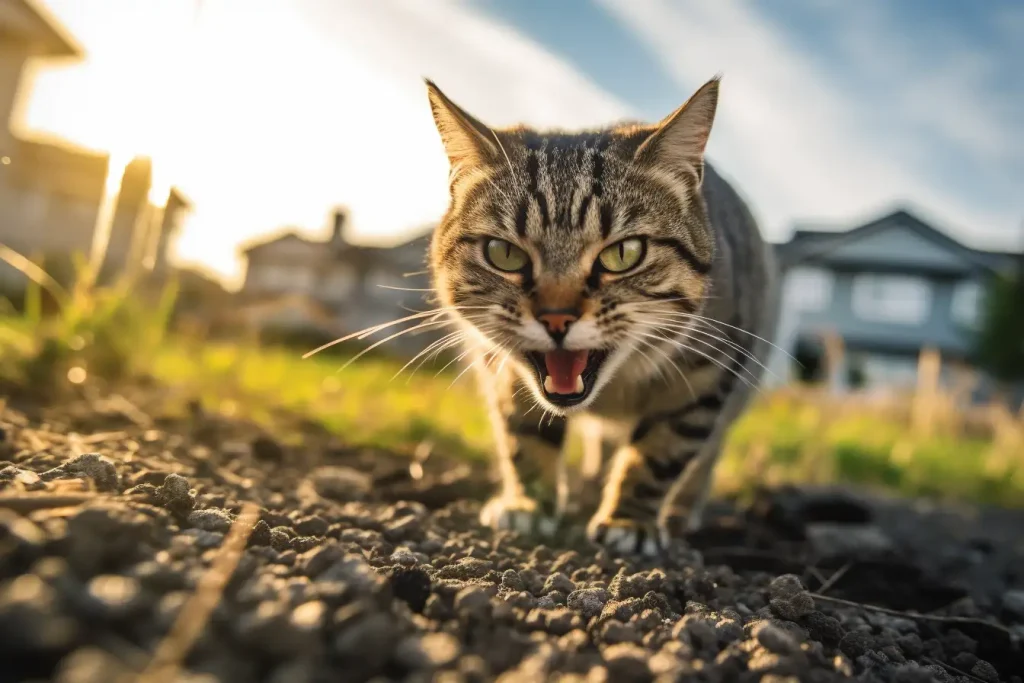
Impact on Small Mammals
The Dietary Preferences of Stray Cats
The lifestyle of stray cats varies dramatically from their indoor counterparts. One significant area of difference lies in their diet. Stray cats are typically opportunistic feeders, making the most of what’s available in their environment. Not surprisingly, small mammals, particularly rodents like rats and mice, feature prominently in their menus. The feline prowess for hunting, honed through centuries of evolution, allows these urban hunters to significantly reduce the population of these small creatures within their territories.
The Double-Edged Sword of Pest Control
On the surface, this might seem like a beneficial attribute. After all, who wouldn’t appreciate a natural method for controlling the population of pests, particularly in urban environments where rodents often thrive? Stray cats, with their exceptional hunting skills, do indeed help keep the population of such species in check. However, as is often the case with nature, things are not as straightforward as they seem.
The Ecological Role of Small Mammals
Small mammals are more than just potential prey or pests. They play pivotal roles in their ecosystems, roles that are often underappreciated. For instance, many rodents are responsible for seed dispersal, helping to propagate plants and thereby contributing to the biodiversity of their habitats. In the cycle of nutrients, small mammals contribute to soil fertility through their droppings, enhancing plant growth and health. Furthermore, they form an essential part of the food chain, providing sustenance for a variety of predators, birds of prey, snakes, and even larger mammals.
The Consequence of High Predation Pressure
When the predation pressure from stray cats becomes too high, it disrupts these essential roles that small mammals play. A dramatic reduction in the population of these species could mean fewer seeds being dispersed, affecting plant diversity and growth. Nutrient cycling could be hampered, and other predators that depend on these rodents for food may struggle to find enough to eat.
The result of this disruption is an imbalance in local ecosystems. The effects of this imbalance can be wide-reaching, affecting other wildlife, plant life, and potentially even the overall health of the environment. The roles that each species play in their ecosystems are interconnected, and when one is affected, it inevitably influences the others.
Effects on Endangered Species
Impact on Endangered Birds
As opportunistic hunters, stray cats do not discriminate between common and endangered species. They pose a significant threat to endangered bird species, particularly those that nest or feed on the ground, making them easy prey. For instance, in Hawaii, the endangered nēnē (Hawaiian goose) often falls victim to cat predation due to its ground-nesting habits.
Many of these endangered bird species are crucial for the maintenance of their habitats, playing roles such as seed dispersers or insect controllers. Their decline can trigger a cascade of changes in the ecosystem, leading to decreased biodiversity and the potential extinction of other species.
Impact on Endangered Small Mammals
Stray cats also impact endangered small mammal populations. One prominent example is the Key Largo woodrat, native to the Florida Keys. These woodrats are on the brink of extinction, and cat predation is a significant contributing factor.
Not only is the immediate loss of these species tragic, but the resulting impacts on their ecosystems are also significant. These mammals often serve as prey for other predators, contribute to seed dispersal, and play a role in nutrient cycling. The loss of these functions can severely disrupt ecosystem balance.
The gravity of the threat that stray cats pose to endangered species underscores the urgency of finding effective and humane solutions to manage stray cat populations. This isn’t just about protecting individual animals; it’s about preserving whole ecosystems and the precious biodiversity they support.
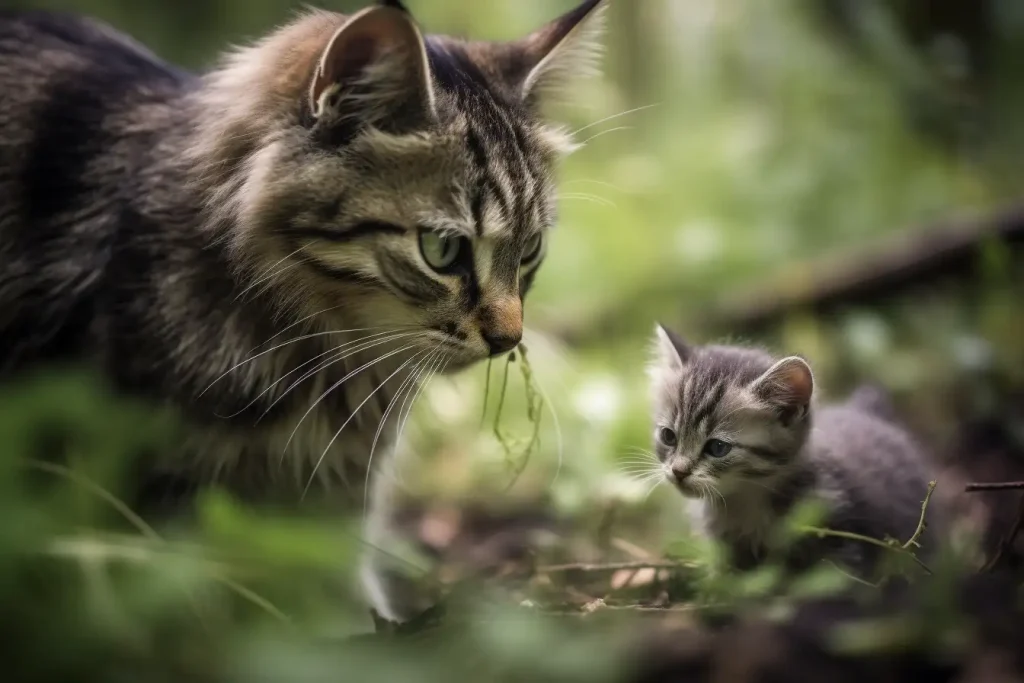
Impact on Other Fauna
The impacts of stray cats extend beyond birds and small mammals. Cats have been known to prey on a variety of other creatures, including reptiles like lizards and amphibians like frogs. Some of these species may already be vulnerable due to habitat loss, pollution, or climate change. Adding predation pressure from cats can exacerbate these challenges.
Interestingly, the influence of cats on local fauna can also be indirect. For instance, by reducing the population of certain small mammals, they might indirectly increase the populations of other species that were previously kept in check by those mammals. These ripple effects can further disrupt local ecosystems and biodiversity.
Cats as Vectors of Disease
Impact on Wildlife and Pets
An often overlooked aspect of the stray cat population’s impact on local ecosystems is their potential role as disease vectors. Unvaccinated and exposed to the elements, strays may harbor a variety of diseases. One of these is Toxoplasma gondii, a parasite that cats shed in their feces. This parasite, once in the soil or water, can infect a wide range of animals and lead to toxoplasmosis, a disease that can be particularly detrimental to species with low immunity or those already at risk.
Stray cats can also carry more direct threats to other cats and pets in general. Feline Immunodeficiency Virus (FIV) and Feline Leukemia Virus (FeLV) are two fatal diseases that can be transmitted from strays to pet cats, typically through bite wounds. Both of these diseases compromise a cat’s immune system, making it difficult for them to fight off other infections and illnesses.
Implications for Human Health
The potential risk extends beyond wildlife and our pets; some diseases carried by stray cats can also be transmitted to humans. For instance, the aforementioned Toxoplasma gondii can cause toxoplasmosis in humans as well, especially affecting pregnant women and individuals with weakened immune systems. Similarly, cats can be carriers of the bacteria that cause cat scratch disease (Bartonella henselae), which, while usually not severe, can cause significant illness in humans.
Rabies is another major concern. Although cases of transmission from cats to humans are rare, the potential risk exists, especially in areas where rabies is endemic in wildlife.
This underlines yet another reason why managing stray cat populations effectively and humanely is of utmost importance. It’s not just a matter of ecological balance, but also a matter of public health.
Human Facilitated Factors
The narrative of stray cats and their ecological impact is a complex web that weaves in the influence of human activities. Indeed, our choices and behaviors play a significant role in shaping the stray cat landscape, often contributing to the issues we see today.
Abandonment of Pets
A leading contributor to the stray cat population is the abandonment of pets. The reasons for this are myriad, ranging from changes in living situations, economic hardships, to simply a lack of responsibility. When pets are abandoned, they face a new, often harsh, reality. They are left to fend for themselves in an environment far removed from the comfort of a loving home.
In their struggle for survival, these abandoned cats often tap into their innate predatory instincts. They hunt not just for sustenance, but also as a part of their natural behavior. This newfound necessity to hunt can exacerbate the pressure on local wildlife populations, disrupting the delicate balance of ecosystems.
Feeding Stray Cats
Most of us are driven by compassion, and the sight of a forlorn stray cat can tug at our heartstrings. The instinctive reaction is to offer food, an act that, while well-intentioned, can have unintended consequences.
Providing regular food for strays can lead to a rise in their survival and reproduction rates. The abundance of food resources can support larger populations and encourage the congregation of cats, making it easier for them to find mates. Moreover, well-fed cats have more energy to reproduce and hunt, adding to the strain on local fauna.
Uncontrolled Breeding of Unneutered Cats
The phrase “multiplying like rabbits” could very well be applied to cats. Cats are prolific breeders, and a single unneutered cat can contribute significantly to the stray population.
When pet owners allow their unneutered cats to roam freely, it increases the chances of unplanned litters that may end up in the wild. These offspring, born outside the confines of a home, quickly acclimate to the feral lifestyle, adding to the ranks of proficient hunters preying on local wildlife.
These human-facilitated factors, in combination, create a chain reaction that culminates in a growing population of stray cats. This leads to an intensification of their ecological impact, as a higher number of cats hunting local fauna can significantly disrupt biodiversity and ecosystem balance.
The narrative, however, need not be one of despair. By understanding our role in facilitating these factors, we can also be the catalysts for change, adopting responsible pet ownership practices and advocating for effective stray cat management strategies in our communities.
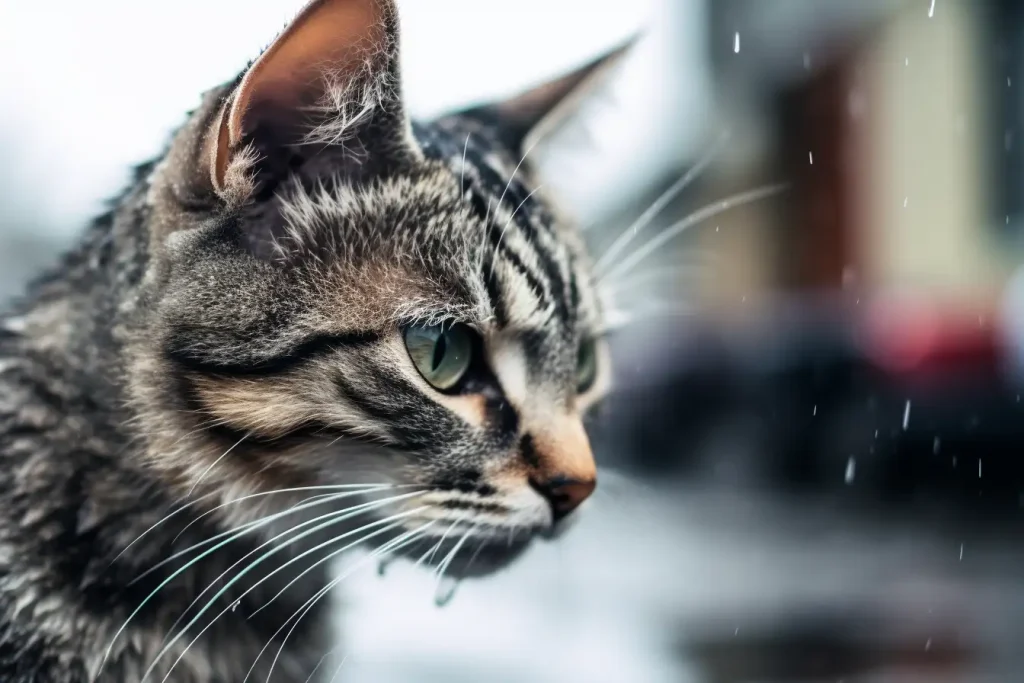
Community Attitudes Towards Stray Cats
Societal Perceptions
Public perception plays a significant role in the management and well-being of stray cats. Broadly speaking, attitudes towards these felines vary considerably, often influenced by cultural, regional, and personal factors. Some individuals view stray cats as nuisances, associating them with noise, mess, and disease. They may see these animals as threats to local wildlife and, therefore, advocate for their removal.
On the other hand, many people empathize with stray cats’ plight. These individuals often view strays as victims of abandonment or circumstance, deserving of compassion and care. This viewpoint can lead to behaviors such as feeding strays or advocating for their protection and welfare.
Impact on the Problem Scale and Mitigation Measures
These contrasting attitudes significantly influence both the scale of the stray cat issue and the effectiveness of its potential solutions. For instance, those who feed stray cats, while well-meaning, can inadvertently contribute to growing stray populations by improving survival and reproduction rates. This can exacerbate the challenges faced by local wildlife.
Similarly, public support or opposition can make or break initiatives aimed at managing stray cat populations. Programs like Trap-Neuter-Return (TNR) often require community involvement and backing to be successful. Thus, understanding and addressing public attitudes is a crucial step towards effective and humane stray cat management. Educating the public about the ecological implications of stray cats and promoting responsible pet ownership are necessary components of any comprehensive approach to this issue.
Mitigation and Control Measures
Managing the population of stray cats is a complex issue. Traditional methods like capturing and removing cats can be ineffective in the long term, as new cats often move in to take advantage of the available resources, a phenomenon known as the “vacuum effect.”
One widely used approach to manage stray cat populations is the above-mentioned TNR program. This method involves trapping stray cats, neutering them, and then returning them to their territories. While this doesn’t immediately reduce the number of cats, it can help slow population growth over time.
Other innovative measures are being taken around the world to manage stray cat populations. These include developing and promoting cat-friendly gardening and wildlife protection practices, establishing designated feeding areas for strays to reduce their need to hunt, and promoting responsible pet ownership, among others.
The Role of Animal Shelters and Rescues
The Place of Solace
Animal shelters and rescue organizations play an indispensable role in addressing the stray cat issue. These establishments provide immediate relief for the felines, offering them a safe haven from the perils of the outdoors. They ensure that the cats are well-fed, receive necessary medical attention, and most importantly, are spayed or neutered to prevent further breeding.
Healing, Love, and Care
In addition to physical care, shelters and rescues dedicate significant effort to the social rehabilitation of stray cats. Many stray cats may have had negative interactions with humans or may not be accustomed to living in close quarters with people. Trained staff and volunteers work to help these cats overcome their fears, providing them with the care and affection they need to grow comfortable with human interaction. This increases their chances of being adopted into loving homes and living out their lives as cherished pets.
Education and Advocacy
Beyond direct care for cats, animal shelters and rescues also serve a crucial educational role. They actively advocate for responsible pet ownership, including the importance of spaying and neutering pets. Many also run community outreach programs to educate the public about the challenges faced by stray cats and the impact they have on local ecosystems. This grassroots education can lead to greater community involvement in addressing the issue of stray cats.
Working Towards Sustainable Solutions
Finally, these organizations often work closely with local government bodies and other conservation groups to develop and implement more sustainable, long-term solutions to the stray cat problem. This includes supporting trap-neuter-return programs, pushing for policy changes, and helping to develop urban design strategies that are more wildlife-friendly. Through their tireless work, shelters and rescues make significant strides towards creating an environment where cats and local wildlife can coexist harmoniously.
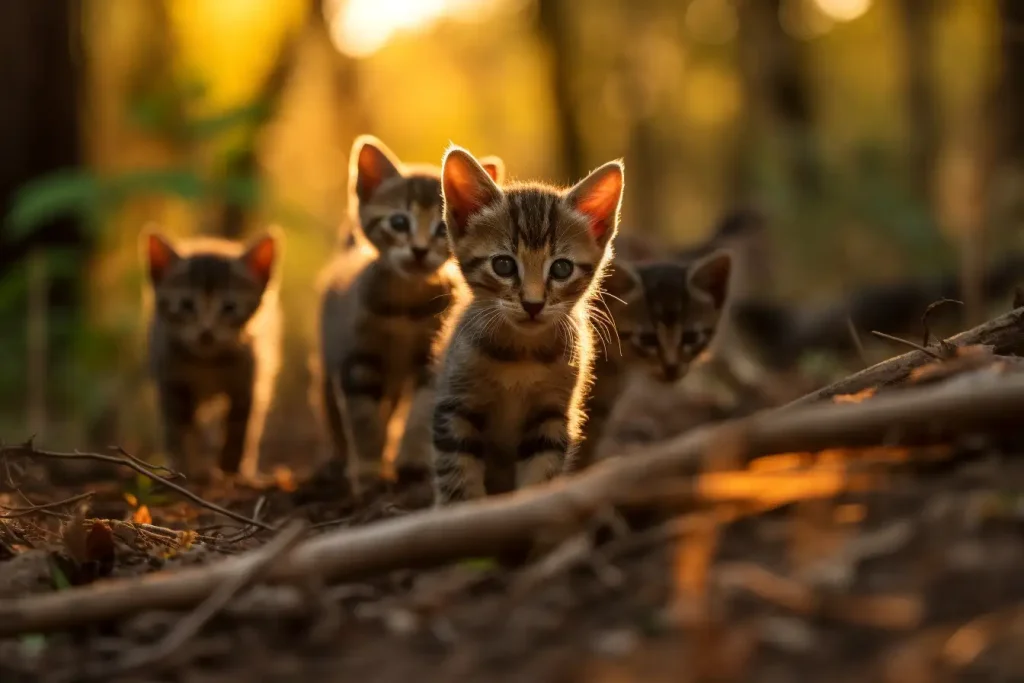
Policy and Legal Considerations
Legal Frameworks Governing Stray Cats
Navigating the landscape of legal regulations surrounding stray cats can be complex, as it varies significantly across different countries and regions. In many places, laws related to stray cats fall into the categories of animal welfare, public health, and biodiversity conservation.
In the realm of animal welfare, many jurisdictions have established laws against animal cruelty, which can extend to stray cats. For instance, abandonment of pets is considered illegal in many places, acknowledging the challenges abandoned pets face when trying to survive on their own.
Policies Impacting Local Wildlife
On the other hand, the need to protect local wildlife often influences laws in a different direction. Some regions, particularly those with high biodiversity or endangered species, have regulations against feeding stray cats or allowing owned cats to roam freely, recognizing the potential threat that cats pose to local fauna.
These regulations are often put in place to minimize the predation pressure on local wildlife, especially in areas where native species are under threat. It’s a delicate balance between ensuring the welfare of cats and protecting wildlife, illustrating the complex interaction between different policy areas.
Community and Government Initiatives
Government policies and initiatives play a critical role in managing stray cat populations. The TNR programs at the community level are often backed by local government policy. These programs aim to humanely control stray cat populations, indirectly protecting local wildlife by limiting the growth of cat numbers.
Moreover, legislation promoting responsible pet ownership, such as mandatory microchipping and desexing, can prevent the increase of stray populations. Local governments often take the lead in implementing and enforcing such legislation, emphasizing the importance of community involvement in addressing the issue.
The Impact of Stray Cats on Local Wildlife – Conclusion
Our relationship with cats is multifaceted and complex. As we balance our affection for these charismatic creatures with the need to protect local wildlife, it becomes clear that responsible pet ownership and community involvement are crucial to managing stray cat populations.
By understanding the potential ecological impacts of stray cats and acting responsibly, we can help to create an environment where cats, wildlife, and humans coexist sustainably. It calls for a concerted effort – from scientists studying cats’ impacts, policymakers drafting humane and effective control measures, to each one of us considering the well-being of our local ecosystems.
The impact of stray cats on local wildlife is a global issue that needs our attention. As a society, we need to continue developing and implementing strategies that promote both the welfare of cats and the conservation of our wildlife.
Key Takeaways
- Stray cats, especially in urban settings and isolated ecosystems, can have a profound impact on bird populations and endanger small mammal populations.
- The loss of birds can lead to significant disruptions in ecosystems, affecting biodiversity and potentially leading to the extinction of other species.
- Traditional methods like capturing and removing cats can be ineffective in the long term, as new cats often move in to take advantage of available resources.
- TNR programs can help slow population growth over time by neutering and returning stray cats to their territories.
- Innovative measures like developing cat-friendly gardening practices and establishing designated feeding areas for strays can also help manage stray cat populations.
- Animal shelters and rescue organizations play an important role in addressing the stray cat issue.
- Society needs to develop and implement strategies that promote the welfare of cats and the conservation of wildlife.
COPYRIGHT NOTICE
Please be advised that all images, designs, and creative content on this page are the exclusive property of Stray-Cat-Advice.com and are protected under international copyright laws. The images may not be reproduced, copied, transmitted or manipulated without the written permission of stray-cat-advice.com.
Unauthorized use, distribution, display, or creation of derivative works of any images contained on this site, is strictly prohibited and can lead to legal penalties. We actively monitor for, and enforce, our copyright interests.
If you wish to use any of our images, kindly contact us to seek permission. Respect of copyright is not merely a legal requirement but also an acknowledgement and support of the hard work and creativity that goes into producing them.
Thank you for your understanding and cooperation.
© 2023, stray-cat-advice.com. All Rights Reserved.


